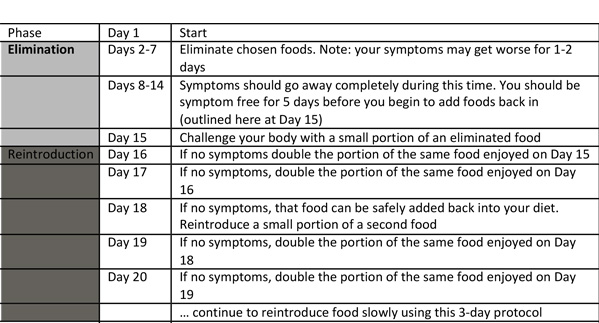
Stephanie Margolis, R.D.
Elimination diets have been around since the late 1920s, and today they are some of the most popularized diets out there (especially at the beginning of the New Year). While the marketing and “fad diet” elements of some of these diets is concerning, the premise of the diet has been clinically tested and can be seen implemented in a medical setting. Many times, when patients complain of symptoms such as fatigue, stomach distress, or headaches, a food sensitivity can be suspected. Often an elimination diet is recommended. Here we are going to go through the why, what, and how of this diet.
Note: The information listed below is not specific to breastfeeding or pregnant moms. For more nutrition guidance visit our pregnancy and breastfeeding nutrition articles.
Following an elimination diet means you are omitting a food or a group of foods for 2 – 4 weeks. The focus is not on simply eliminating “unhealthy” foods but identifying what food or food component may be causing you issues.
When you are having symptoms such as stomach or bowel irritation, headaches, or just general feelings of unwell (tired, brain fog), it may not be a byproduct of #MomLife, it may mean your body is having a reaction to something you eat. We tend to think of a food allergy as instantaneous – getting swollen, feeling itchy, unable to breathe. Those are very real symptoms of a severe food allergy and should be diagnosed by your doctor. However, a more common occurrence is a mild food allergy or even a food sensitivity to certain foods or food groups. For example, after eating a dairy-rich meal, a little while later you may find yourself tired with a headache. You may chalk it up to lack of sleep or down some caffeine to help, when it’s actually your body’s way of presenting your food sensitivity.
Food sensitivities or allergies can present differently in everyone, so it’s important to tune in to how you feel and identify the link between your food and how you feel. The good news is there are some common culprits of food allergy or sensitivity. They are:
If you read some of these symptoms or have just been feeling a little “off” lately, following an elimination protocol could help. There are three defined levels of an elimination diet.
After you have determined which foods you are going to eliminate you should be prepared to make detailed notes over the next few weeks, which includes an elimination phase and a reintroduction phase.
When you are ready to start your two-week elimination will look like this:

Ideally, you will see a difference in the way you feel in just two weeks; however, you need to be symptom free for least five days before reintroducing foods.
Once you’ve determined you’re ready to reintroduce some of the eliminated foods, start with the food component in its most pure form. For example, if you eliminated wheat, eat a small portion of wheat cereal. Only add one food at a time and take notes! If you can enjoy this food with no symptoms for 3 days, you can move on to the next food. Taking this slow approach to adding the eliminated foods back into your diet will help you dial in on the exact food or food component that is an issue for your body.
If you’ve been feeling a little off or have symptoms of inflammation happening in your body, consider undertaking a 2-week elimination diet. This is not a long-term solution, but a way to check in with your body and identify the foods that are working for you. When you eliminate foods, be sure that foods you ARE eating are whole foods and provide variety, so you are still meeting your nutritional needs. If you do the first level of elimination with no reprieve, check in with your doctor to discuss next steps.
